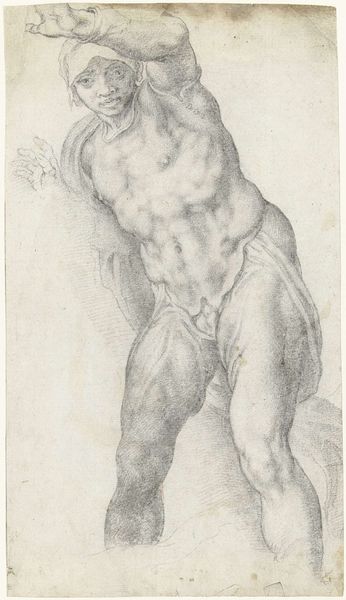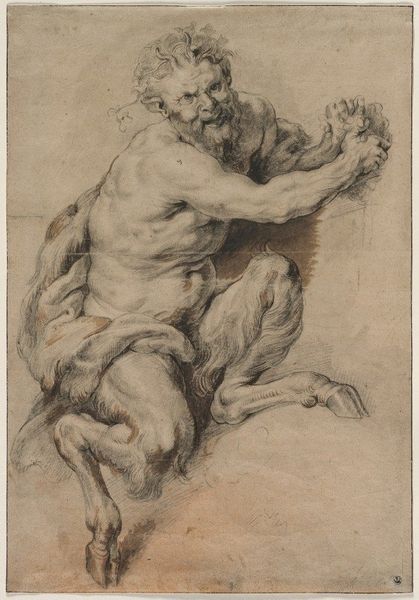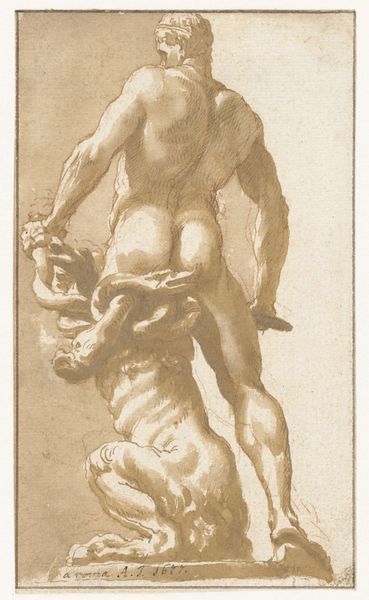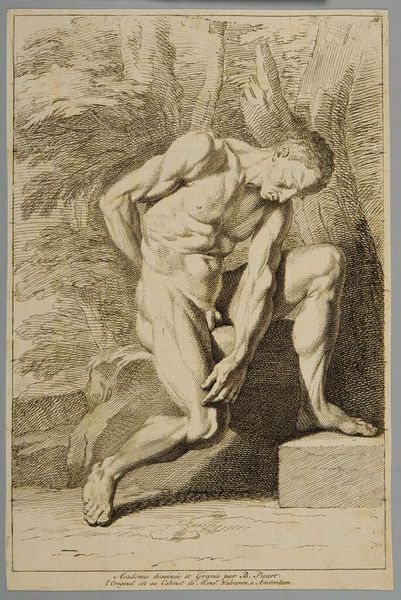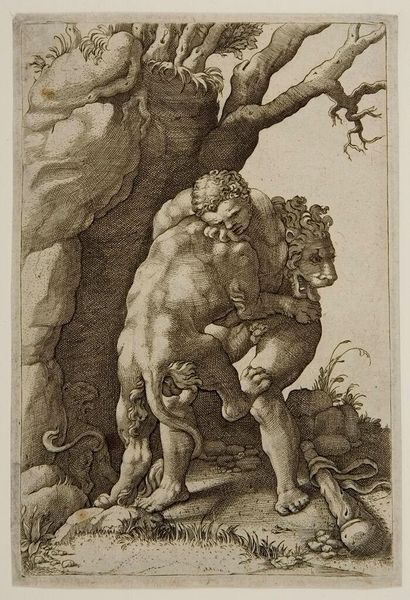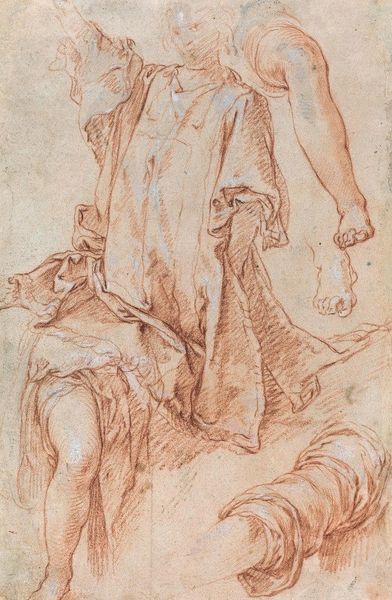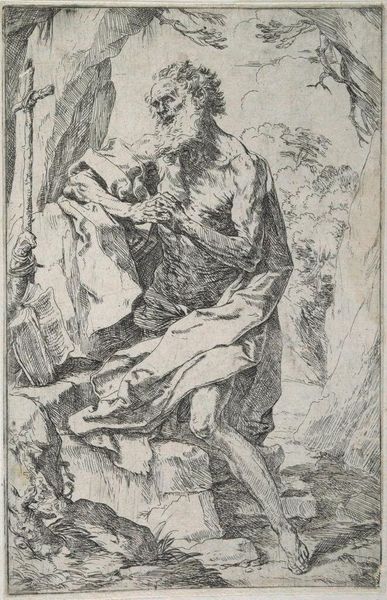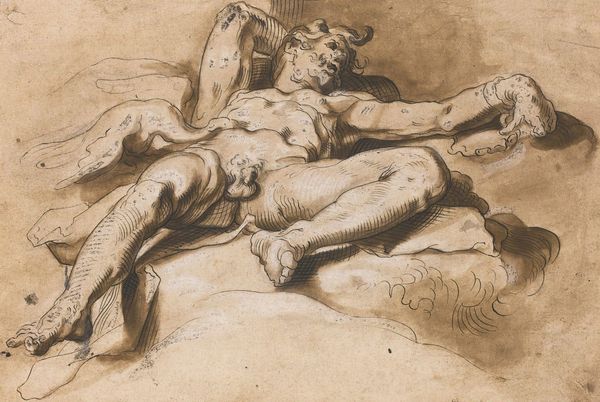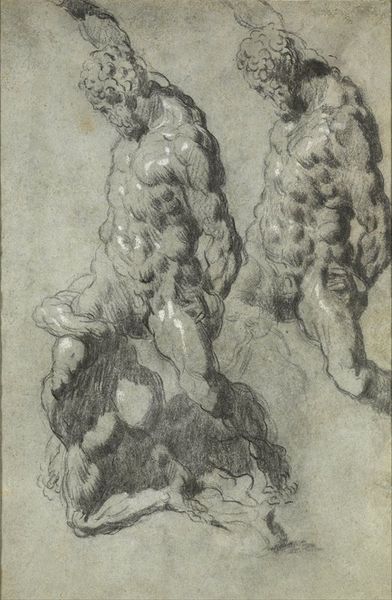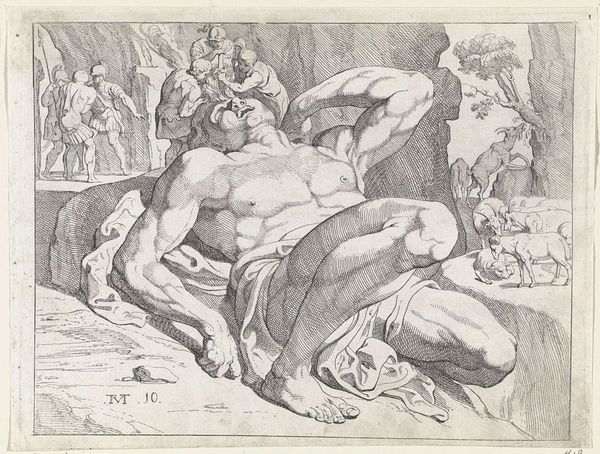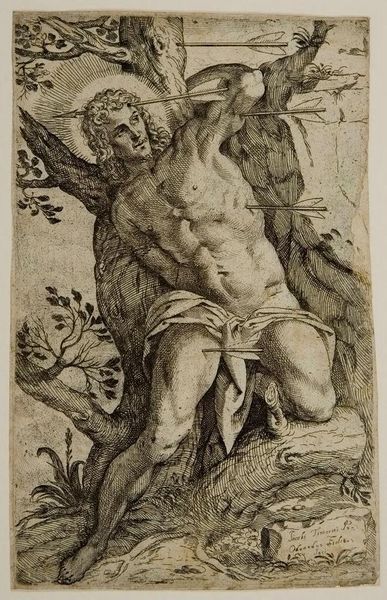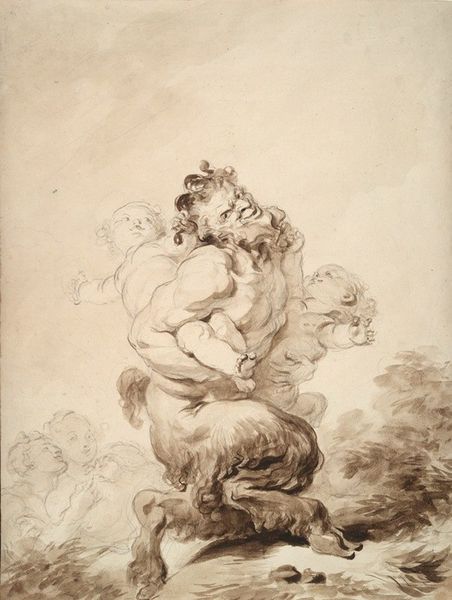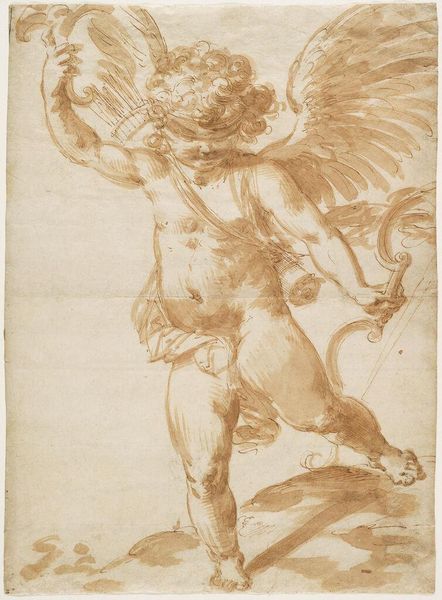
drawing, paper, ink
#
drawing
#
mannerism
#
figuration
#
paper
#
ink
#
history-painting
#
nude
Copyright: Public domain
Editor: This drawing, "The Original Sin," depicts Adam and Eve and was created in 1611 by Bartholomeus Spranger using ink on paper. The figures are contorted and crowded, creating an unsettling tension. What symbolic elements are most striking to you? Curator: The serpent, of course, immediately captures our attention. But consider its positioning, almost crowning Eve. In Mannerist art, such exaggerated forms often signify not just sin, but the twisting of natural order and reason. How might the surrounding figures reflect this idea? Editor: The way Adam seems to recoil, almost violently, perhaps indicating an immediate, visceral reaction to the transgression. Is that reading too much into it? Curator: Not at all. The drawing captures that precise moment of realization and irrevocable change. The snake looks powerful here. How might our cultural understanding of snakes inform our experience of it today? Editor: In many cultures, snakes represent both chaos and transformation. The shedding of skin, I suppose, signifies rebirth. Could that potentially bring forth redemption following the original sin in this context? Curator: Precisely. This ambiguity is what makes Spranger's piece so compelling. The original sin is tragic. Yet the scene holds this duality; destruction intertwined with the potential for regeneration. Do you think the cultural context of 1611 when Spranger produced the work can reflect it, and why? Editor: Sure, in that era, there may be religious interpretations but also, a rising exploration of human nature and individualism. The artist captures this clash between moral rigidity and expanding knowledge of ourselves. I’ll think of rebirth from now on when viewing artworks. Curator: That's a great point and wonderful perspective, how imagery has the ability to be rooted in its past while pointing to future evolution.
Comments
No comments
Be the first to comment and join the conversation on the ultimate creative platform.

